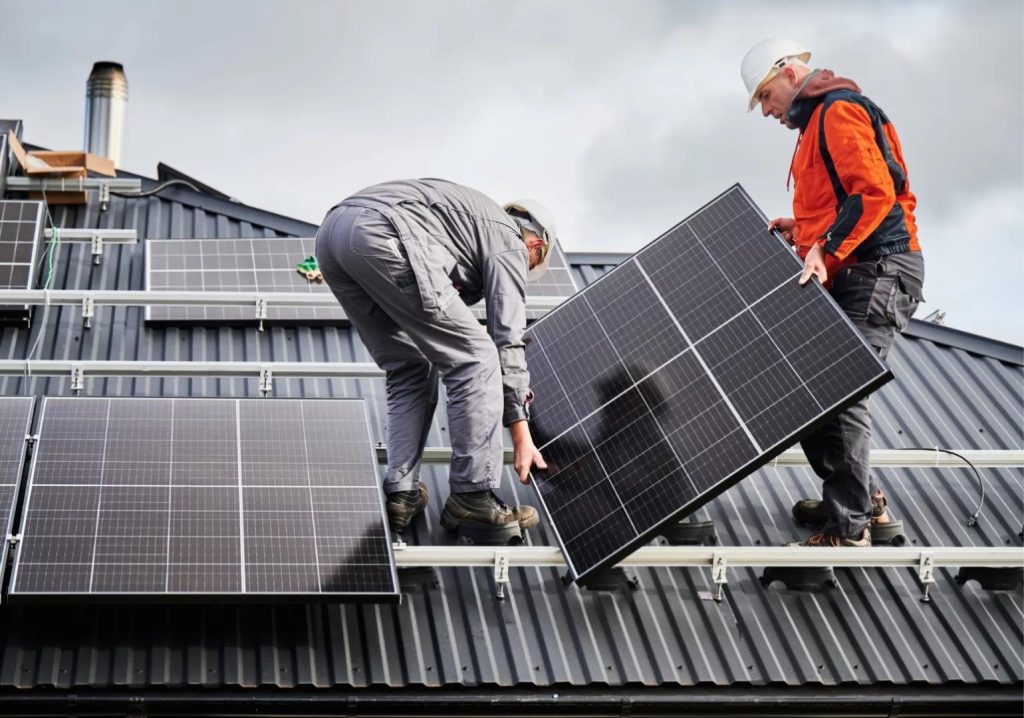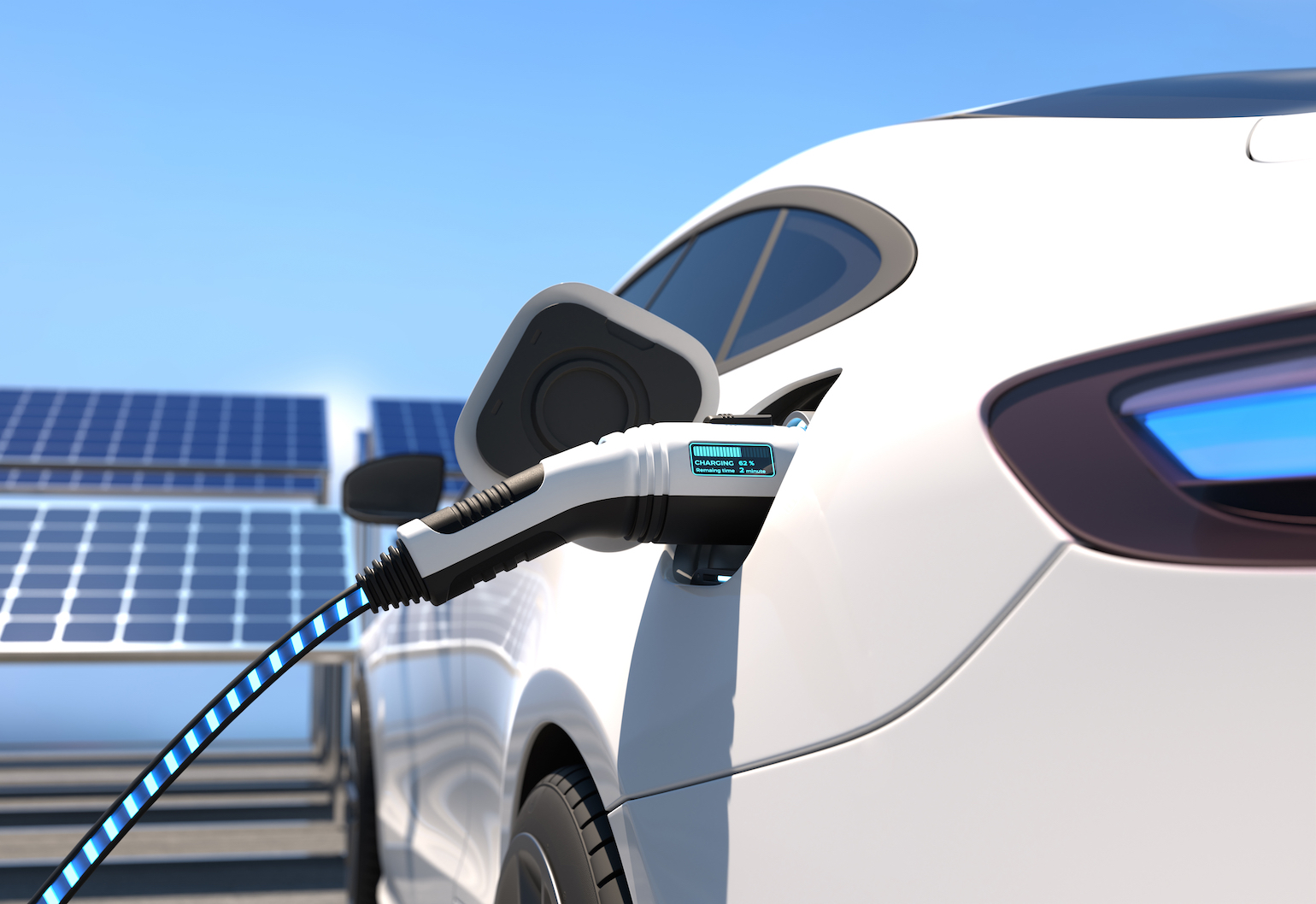The region is kicking some serious renewable energy goals, with a significant upswing in generation over the last half decade. But significant work needs to be done to ensure the country has the storage and infrastructure capabilities to match.
Not long ago, only a fraction of Australia’s electricity came from renewable sources.
Back in 2017, only 17 per cent was generated from renewables. The majority of that share was from hydropower, which has been around for eons, said Kane Thornton, CEO of the Clean Energy Council.
“But over the last five years, we’ve more than doubled the amount of renewable energy in the system,” Thornton told create.
In 2023, there was a rapid upturn in renewable energy generation to the tune of 9.7 per cent, with 5.9 GW capacity added in a single year.
Now, almost 40 per cent of Australia’s electricity comes from renewable sources, with three key innovations propelling the country towards this point:
- Large-scale wind
- Large-scale solar
- Rooftop solar
According to Thornton, this trend is expected to continue.
“It’s really clear that wind and solar are the two lowest-cost, most proven forms of energy generation, and will continue to play a big role as Australia now moves towards 100 per cent renewables,” he said.
Australians have been doing their part
In a large-scale sense, wind farms formed a substantial part of the renewable energy shift – 13.4 per cent in 2023 – with three new facilities slated for completion in 2024 which will significantly boost capacity.
But everyday Australians have also played an important role through the adoption of rooftop solar, with nearly four million homes now adorned with photovoltaic modules.
“For at least the last five years, over 300,000 Australian households per year have installed rooftop solar,” Thornton added.
There were 337,498 solar systems installed across Australia in 2023 (3.1 GW capacity added), up from 315,499 in 2022.
A key trend fuelling uptake of these technologies and solutions is that costs have continued to come down.
“Australia is a sunny and windy place, so we’ve got great resources,” he said. “But like anything that’s scaled up, as you build more wind farms or install more solar panels, it gets cheaper,” he said.
The government has also leaned into the challenge in recent years, recognising the important role of renewable energy via a range of incentives.
This includes at a national level via the Renewable Energy Target, supporting both large-scale renewables and household solar, and various measures implemented by state and territory governments.
“For example, in Queensland, the government-owned energy businesses are really enthusiastic about contracting and partnering in renewable projects,” Thornton said. “And Victoria’s Renewable Energy Target’s bill provides contracts for large-scale renewable energy projects.”
Can momentum be maintained?
Now that Australia has come this far, it’s not a matter of maintaining its renewable energy progression, but expediting it.
“Our coal-fired generation is getting older,” Thornton. said. “And over the next 10 years, about 90 per cent of that coal generation is going to close down.”
That’s a significant driver for placing a foot formerly on the accelerator in terms of a large-scale renewable energy rollout between now and 2030.
“We will need to double the current rate at which large-scale renewable energy solutions are being built and rolled out,” he said. “That’s ultimately going to mean more solar farms, more wind farms and more rooftop solar being installed around the country.”

What about storage?
Renewable sources contributed around 95,963 GWh in 2022–23. When much of our renewable energy was generated by hydropower, there wasn’t such a dire need for energy storage.
But now Australia has almost surpassed 40 per cent renewables – with 80-100 per cent in its sights – there has been greater recognition of the importance of storage.
“Coal and gas can be replaced with renewable energy,” Thornton said. “But the availability of wind and solar requires that we also have storage available for the periods when the sun isn’t shining overnight, or when the wind might have died down.”
However, investments are pouring in to tackle this challenge.
“In 2023, there were record levels of investment in 2023 in big batteries, with over $5 billion committed by investors to them,” he said. “We’re also seeing a lot of focus on pumped hydro around the country, along with a range of other energy-storage solutions.”
According to Thornton, we need a variety of energy storage solutions. This includes big batteries for shorter duration energy storage, which is a technology that’s very responsive to the grid. For long-duration storage, hydro and pumped hydro projects are better suited.
“Then there’s a wave of newer forms of long-duration storage being adopted around the world, such as compressed air storage and flow batteries,” he said. “Each of these solutions have different characteristics and costs, and provide different things to the energy market – but a combination of all of them is going to be really important for the future.”
Getting the grid up to speed
Along with storage, another key challenge to overcome is upgrading infrastructure, which includes modernising the grid.
“The grid we have was very much built for the 20th century, with a small number of coal-fired power stations sending electrons out to people’s homes and businesses,” Thornton said.
A different, more dispersed grid is now required, connecting into regions where there are good renewable resources.
The grid of the future also needs to recognise that while homes are customers of electrons, they also now produce, store and export them out to the grid.
“We need a much smarter grid where there’s a lot more interconnectivity and digitisation of electricity in the home,” Thornton said.
That might mean when people step into their EV when leaving the office, it sends a signal to the home to automatically switch on certain appliances such as lights and heaters – relying on power in the home battery charged up during the daytime when the solar panels on the roof were at maximum producing power.

“You might then plug your car into your home, and the system might say that it’s a really good time to export some of the power from your EV out to the grid.”
High demand for electricity in the community or the grid at peak times could lead to significant incentives. When demand drops off later in the evening, the system might prompt the user to charge up their car; the next morning, the battery’s power is replenished by the rising sun.
“That type of system – both in the home and the grid – will mean much better solutions for householders, cheaper power supply, and maximising the energy being produced,” Thornton said.
Is Australia on track to reach net zero?
There’s no doubt that achieving net zero is a significant challenge, said Thornton. But the “shining light” in the country’s progress towards this goal is the electricity sector – with Australia deploying more and more renewable energy while phasing out coal.
“The faster we do that, the better,” he said. “Because many of the other sectors that need to decarbonise will find it much more challenging.”
Take heavy industry, for example. While finding opportunities to reduce emissions in this sector is difficult, one clear pathway is to move away from gas and coal while electrifying manufacturing processes.
“If you’re electrifying homes or businesses using renewable energy, there’s an instant improvement – both in the cost of energy to those businesses, but also the level of emissions that are accounted for from their activity,” Thornton said.
“I think many other countries are in awe of what Australia is doing in our electricity sector, which is doing the heavy lifting as far as our progress towards net zero.”
Australia’s renewable future will be front and centre at Engineers Australia’s Climate Smart Engineering 2024 conference next week in Brisbane.




1. Solar, wind and batteries cannot produce baseload electricity.
2. Solar, wind and batteries cannot control voltage or frequency.
3. Solar, wind and batteries cannot ensure that supply always equals demand.
4. The power grid cannot operate without baseload electricity. Baseload generation is the only means of control and maintaining stability.
Without adequate conventional fully controllable baseload generation (coal, gas, hydro, nuclear), a “black” start would be impossible.
Oh dear, the whole concept of “baseload energy” is old hat – solar, wind and batteries and pumped hydro is the new normal if you can’t see that trend from the graphs above, you know nothing about graphs. Solar and firmed storage, and wind and firmed storage are cheaper than coal or gas and solar is on track to be 50% cheaper by 2035, if not 2030. Batteries dropped in price by 50% in 2023 – by 2035, solar and batteries (8hr+) will be 1/2 the price if not 1/3rd the price of coal or gas.
There is no inherent advantage in solar and wind. This CC reprint by EA without professional electricity system inputs from professionals in the field and the peer reviewed literature is very disappointing.
The panels, turbines and batteries are definitely NOT renewable.
Real consumers are already experiencing hardship from this fantasy.
The madness over renewables will come to fruition when Brownouts during low wind and cloudy days occur for about 2 days. The public will then ask why the system is not working while their food spoils in their fridges. Maybe then the Nuclear debate will be properley addressed.